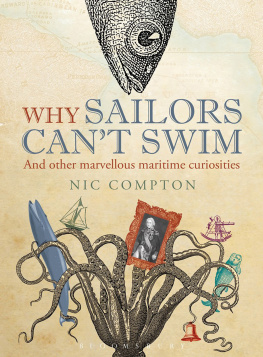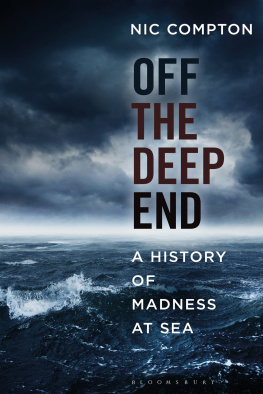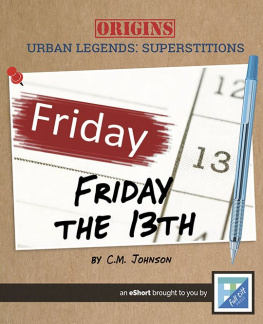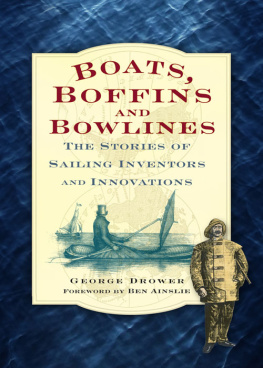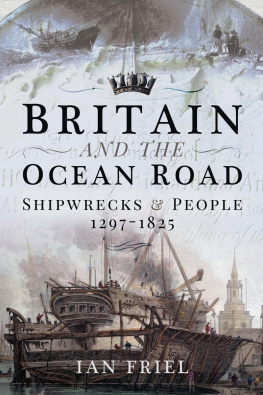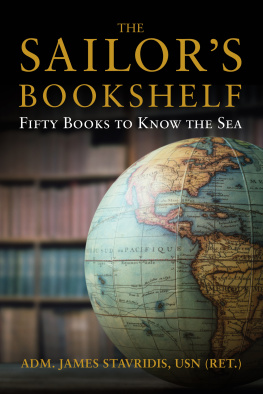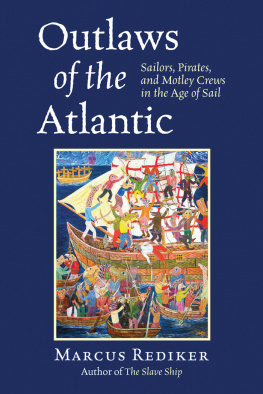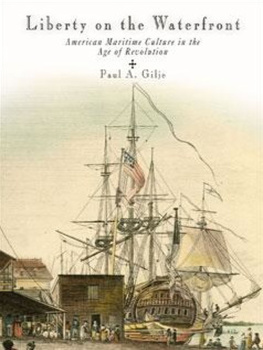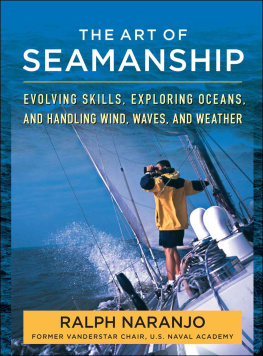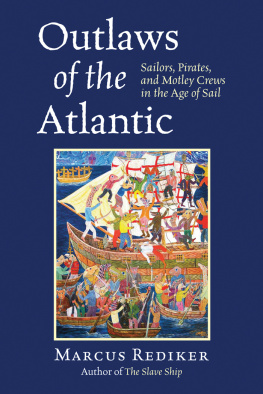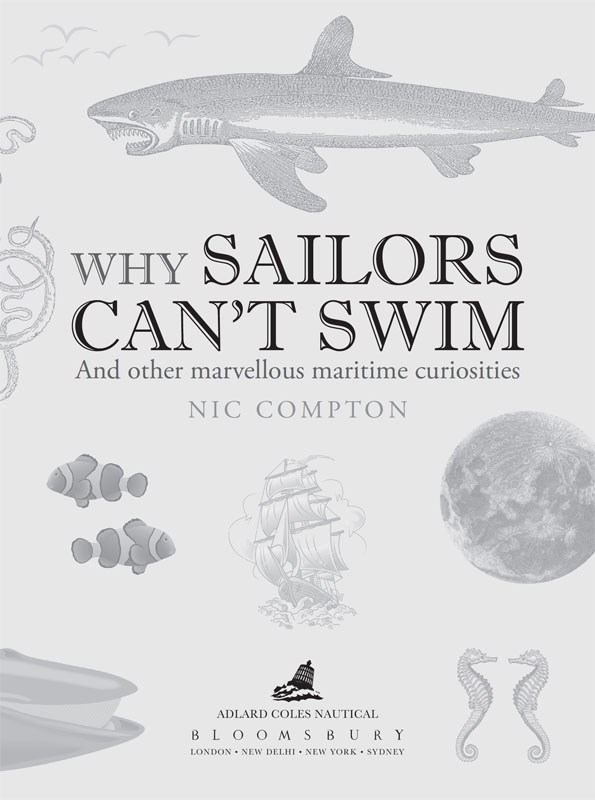Foreword
What do people remember about Nelson? The fact that he thrashed the French at the Battle of the Nile, slaughtered the Danes at the Battle of Copenhagen and chased the French and Spanish fleets across the Atlantic? Or that he died at the Battle of Trafalgar and may (or may not) have asked his second-in-command to kiss him before he breathed his last?
And what about yacht racing? Do people know or care about the latest legal wranglings over the Americas Cup? Or the fact that Conny van Rietschoten is the only sailor to have won the Volvo Ocean Race twice? Or are they more interested in the upside-down sailor Tony Bullimore, who got stuck in his overturned boat in the middle of the Southern Ocean, and a fresh-faced Ellen MacArthur (below), openly weeping after having to climb the mast yet again on the last leg of her legendary round-the-world voyage?

The truth is, we like stories about people. We like anecdotes and quirky tales which is what this book is full of. You wont find any long-winded histories of yachting races or detailed analysis of wetted surface area and angles of heel. Just some great yarns, good old-fashioned drama on the high seas and plenty of stories that dont often get told.
I hope you enjoy reading it as much as I enjoyed writing it!

THE ULTIMATE RACE
I T WAS BILLED AS THE RACE OF THE CENTURY : a contest to see who would be the first person to sail around the world single-handed and non-stop. Several sailors were already preparing for the voyage when the The Sunday Times announced its Golden Globe challenge: a trophy for the first person to complete the circumnavigation, and a 5,000 prize for the fastest. The only stipulation was they had to start and finish from a British port between 1 June and 31 October 1968. In the end, there were nine starters (six British, two French and one Italian), of whom four retired before leaving the Atlantic. Of the rest, Chay Blyth retired after rounding the Cape of Good Hope, Donald Crowhurst committed suicide while faking his journey, Nigel Tetleys boat sank while in the lead and Bernard Moitessier opted out. There was only one finisher: British Merchant Navy officer Robin Knox-Johnston (later Sir), who completed the loop in 313 days. Nearly 40 years later, Sir Robin was at it again. Aged 68, he came fourth in the 200607 Velux 5 Oceans race, finishing in 159 days. He didnt mind not winning this time because, as he said, You cant break my record.
The sea has never been friendly to man. At most it has been the accomplice of human restlessness.
Joseph Conrad, Polish/British author (18571924)
WHY DO SAILORS WEAR EARRINGS?
Traditionally, sailors who had rounded Cape Horn wore a gold loop in their left ear the ear closest to the Cape on a typical eastbound voyage as a sign of their achievement. Sailors are also said to have worn earrings to pay for their funerals should they fall overboard and their bodies be swept ashore. In ancient times, gold earrings were supposedly worn to pay the ferryman to carry you across the River Styx to the afterlife. Gold earrings were also thought to have healing powers and to improve eyesight which sounds a bit mad until you find out theres an acupuncture point in the ear that relates to vision. Another likely reason sailors wore earrings is that timeless obsession: fashion. Sailors just thought they looked good.

CONSIGNED TO THE DEEP
I t was, and still is, commonplace for sailors who died on a voyage to be buried at sea. If there were casualties during a battle or if a ship was sailing in some far-off place, it made no sense to transport bodies with all the associated health risks back home for burial. Adding weight to this view was an old superstition that claimed that carrying a dead body on a ship slowed it down. Typically, a body was stitched up in canvas, weighed down with a suitable ballast such as cannonballs, and after a short service, consigned to the deep. According to tradition, the last stitch of the shroud was usually passed through the nose of the corpse, to ensure the person wasnt just sleeping.

MODERN SEA BURIALS
B URIALS AT SEA are becoming popular once again, and the US Navy receives about 500 requests per year for them from former personnel. According to the US Environmental Protection Agency, bodies must be buried at least 3 miles (5km) away from land and in at least 600ft (180m) of water. If using a casket, it should be weighted with 4lbs (1.8kg) of extra weight for every pound (0.5kg) of body weight and drilled with six 3in (8cm) holes to prevent air getting trapped. In the UK, caskets must be made of softwood such as pine and must not contain any plastic, copper, zinc or lead. British authorities require 4050 holes to be drilled in the casket. Alternatively, you can purchase an Atlantic Sea Burial Shroud from New England Burials at Sea, priced at $1,750 USD plus shipping.
Famous people buried at sea
Mariner and explorer, Sir Francis Drake, in a lead coffin off Panama, 1596; US newspaper magnate, EW Scripps, from own yacht off coast of Liberia, 1926; drummer with the Beach Boys, Dennis Wilson, off California, 1984; actor, John Carradine, off California, 1988; Al Qaeda leader, Osama bin Laden, from USS Carl Vinson in Arabian Sea, 2011 (disputed by some). Of the 328 bodies recovered after the sinking of the Titanic, 119 were too badly damaged to be identified and were buried at sea.
Famous people whose ashes were buried at sea
HG Wells, Steve McQueen, Janis Joplin, Rock Hudson, Gene Kelly, John F Kennedy Jnr.
HOLD FAST
T ATTOOS ARE THOUGHT to have originated among the indigenous tribes of the Pacific and were brought to the West by early explorers. Captain Cook and his crew were probably the first Westerners to experience them and coined the word tattoo from the Polynesian tattow. They were extremely popular among 18th-century sailors and certain images acquired special symbolism. For example:
ANCHOR for crossing the Atlantic (also used for serving in the Merchant Navy).
FULL-RIGGED SHIP for rounding Cape Horn.
TURTLE/KING NEPTUNE for crossing the Equator.
DRAGON for serving in Asia.
PALM TREES for serving in the Mediterranean (Royal Navy) or Hawaii (US Navy).
HULA GIRL for serving in Hawaii (US Navy).
HARPOON for working on a fishing boat.
SPARROW for every 5,000 miles (8,000km) at sea, to help you find your way home.
STAR OR COMPASS ROSE to help find your way home.
HOLD FAST one word across the knuckles of each hand; to prevent falling overboard and/or prevent you letting go of a line.

